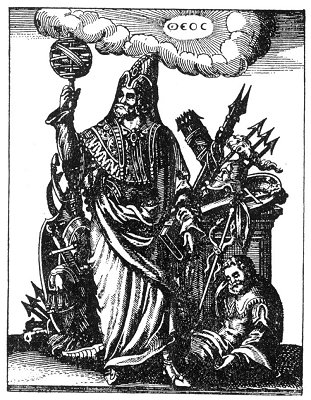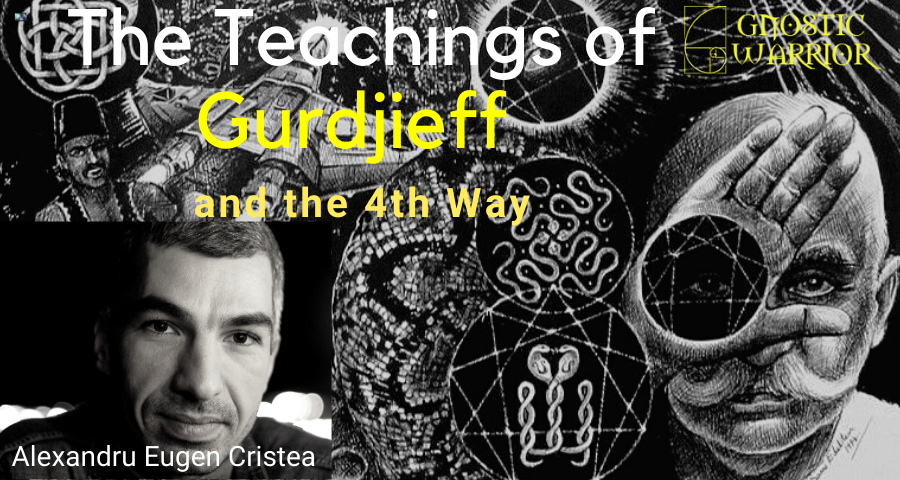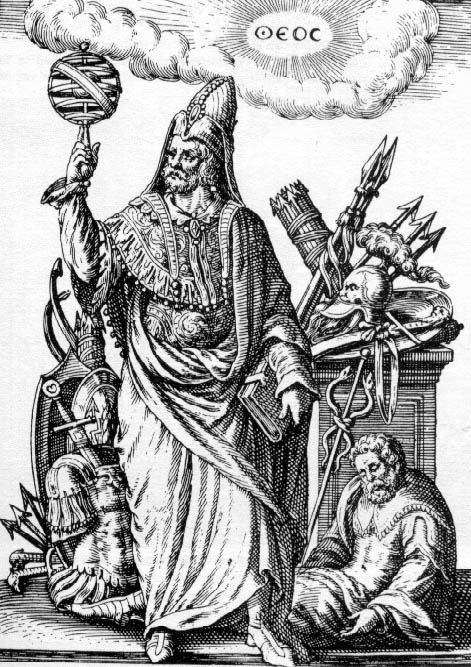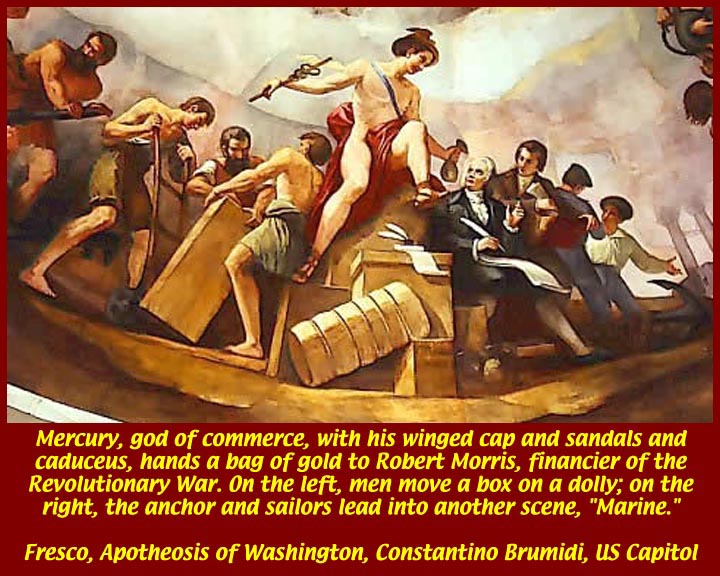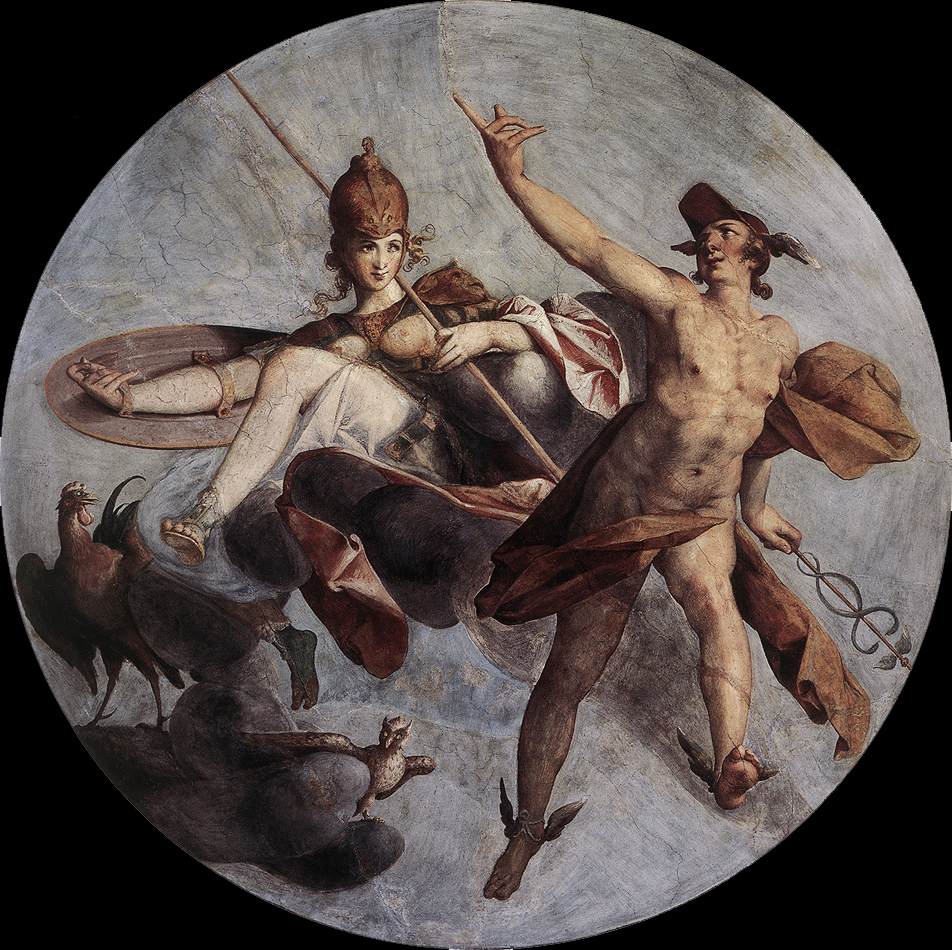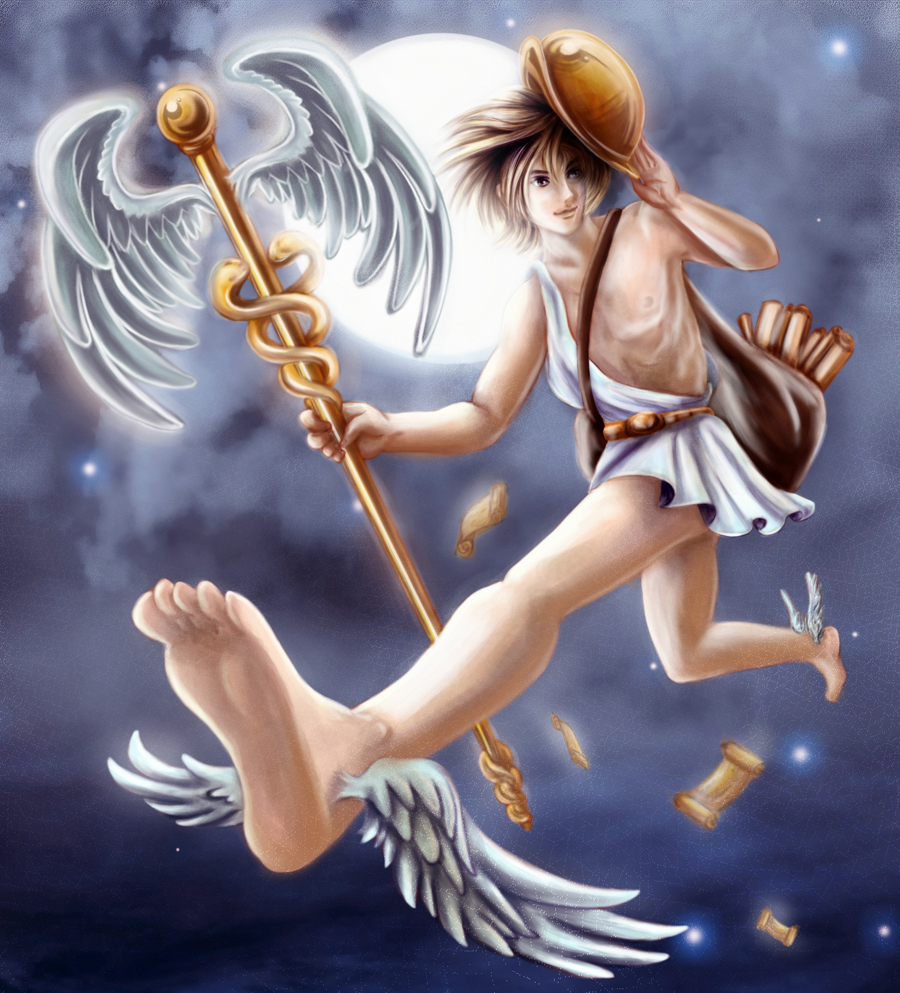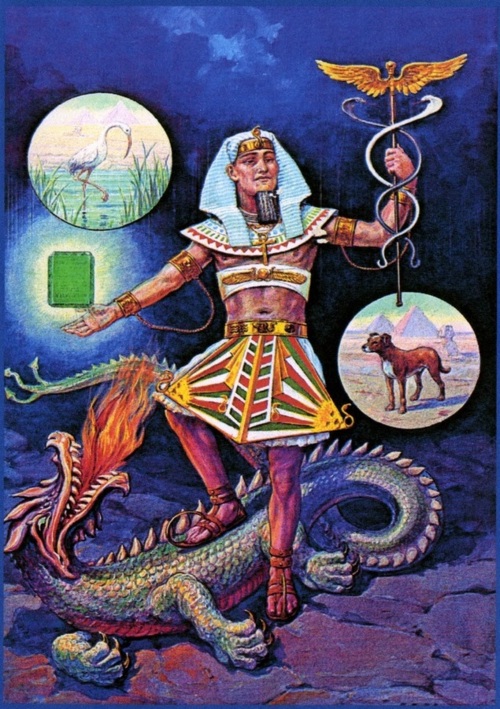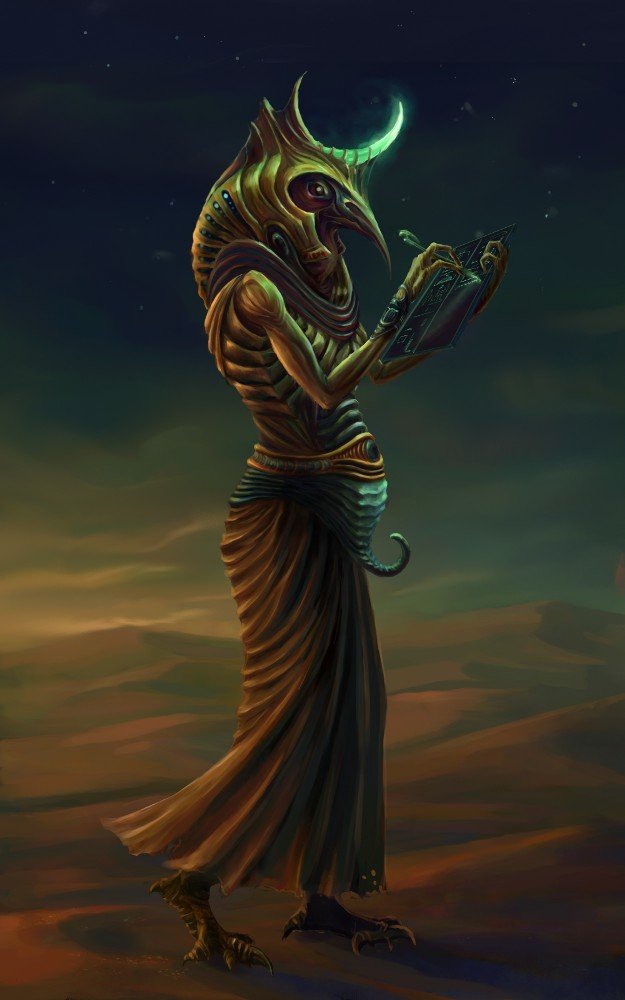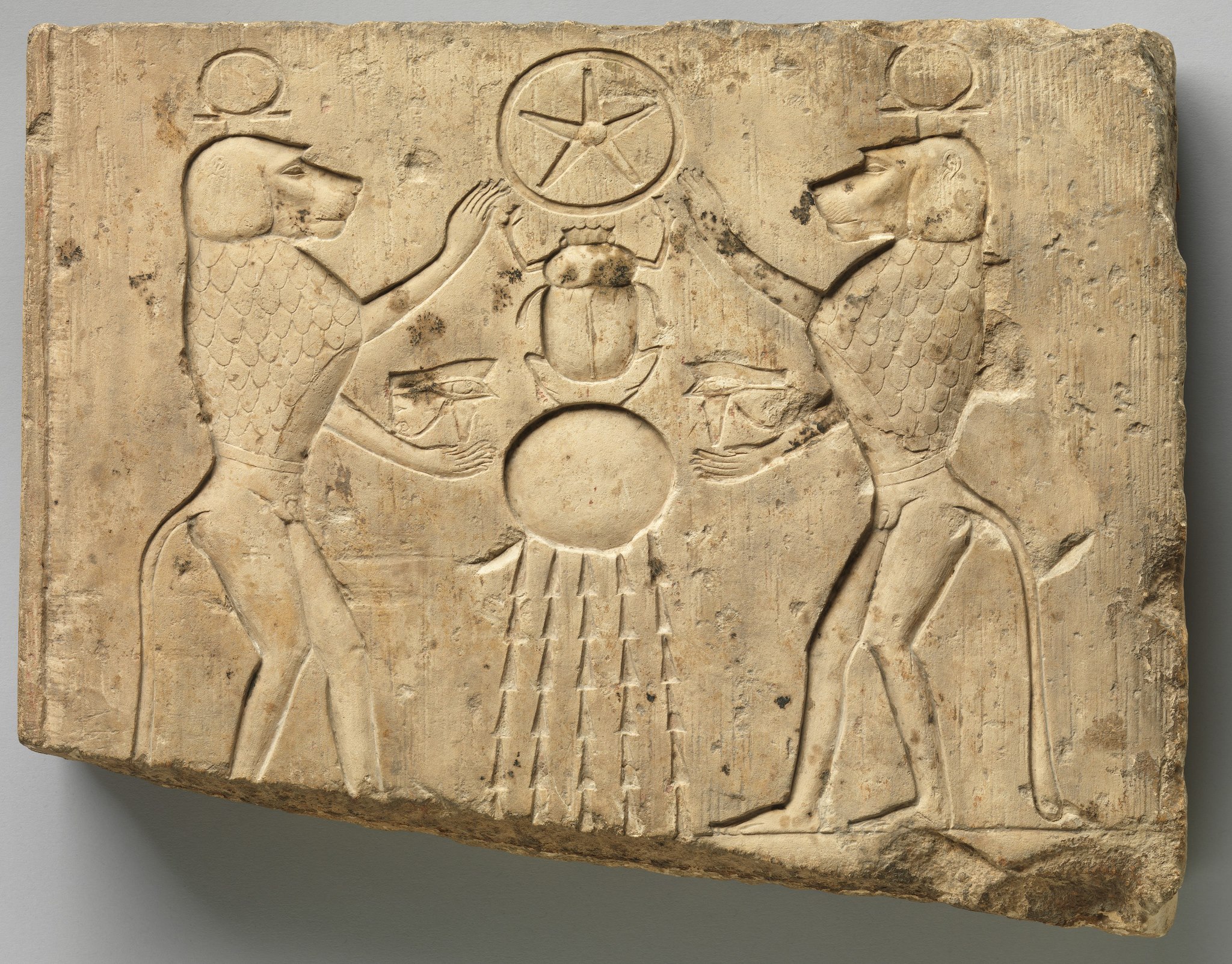In the Egyptian drawings of him, Thoth carries a waxen writing tablet and serves as the recorder during the weighing of the souls of the dead in the judgment Hall of Osiris–a ritual of great significance. Hermes is of first importance to Masonic scholars, because he was the author of the Masonic initiatory rituals, which were borrowed from the Mysteries established by Hermes. Nearly all of the Masonic symbols are Hermetic in character. Pythagoras studied mathematics with the Egyptians and from them gained his knowledge of the symbolic geometric solids. Hermes is also revered for his reformation of the calendar system. He increased the year from 360 to 365 days, thus establishing a precedent which still prevails. The appellation “Thrice Greatest” was given to Hermes because he was considered the greatest of all philosophers, the greatest of all priests, and the greatest of all kings. It is worthy of note that the last poem of America’s beloved poet, Henry Wadsworth Longfellow, was a lyric ode to Hermes. (See Chambers’ Encyclopædia.)
THE MUTILATED HERMETIC FRAGMENTS
On the subject of the Hermetic books, James Campbell Brown, in his History of Chemistry, has written: “Leaving the Chaldean and earliest Egyptian periods, of which we have remains but no record, and from which no names of either chemists or philosophers have come down to us, we now approach the Historic Period, when books were written, not at first upon parchment or paper, but upon papyrus. A series of early Egyptian books is attributed to Hermes Trismegistus, who may have been a real savant, or may be a personification of a long succession of writers. * * * He is identified by some with the Greek god Hermes, and the Egyptian Thoth or Tuti, who was the moon-god, and is represented in ancient paintings as ibis-headed with the disc and crescent of the moon. The Egyptians regarded him as the god of wisdom, letters, and the recording of time. It is in consequence of the great respect entertained for Hermes by the old alchemists that chemical writings were called ‘hermetic,’ and that the phrase ‘hermetically sealed’ is still in use to designate the closing of a glass vessel by fusion, after the manner of chemical manipulators. We find the same root in the hermetic medicines of Paracelsus, and the hermetic freemasonry of the Middle Ages.”
Among the fragmentary writings believed to have come from the stylus of Hermes are two famous works. The first is the Emerald Table, and the second is the Divine Pymander, or, as it is more commonly called, The Shepherd of Men, a discussion of which follows. One outstanding point in connection with Hermes is that he was one of the few philosopher-priests of pagandom upon whom the early Christians did not vent their spleen. Some Church Fathers went so far as to declare that Hermes exhibited many symptoms of intelligence, and that if he had only been born in a more enlightened age so that he might have benefited by their instructions he would have been a really great man!
In his Stromata, Clement of Alexandria, one of the few chroniclers of pagan lore whose writings have been preserved to this age, gives practically all the information that is known concerning the original forty-two books of Hermes and the importance with which these books were regarded by both the temporal and spiritual powers of Egypt. Clement describes one of their ceremonial processions as follows:
“For the Egyptians pursue a philosophy of their own. This is
HERMES MERCURIUS TRISMEGISTUS.
From Historia Deorum Fatidicorum. Master of all arts and sciences. perfect in all crafts, Ruler of the Three Worlds, Scribe of the Gods, and Keeper of the Books of Life, Thoth Hermes Trismegistus–the Three Times Greatest, the “First Intelligencer”–was regarded by the ancient Egyptians as the embodiment of the Universal Mind. While in all probability there actually existed a great sage and educator by the name of Hermes, it is impossible to extricate the historical man from the mass of legendary accounts which attempt to identify him with the Cosmic Principle of Thought.
p. 38

Moe is the founder of GnosticWarrior.com. He is a father, husband, author, martial arts black belt, and an expert in Gnosticism, the occult, and esotericism.

